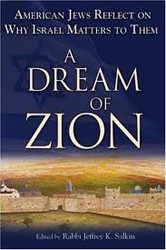The shifting image of the Hasmoneans in the eyes of their contemporaries and later generations is a compelling issue in the history of the Maccabean revolt and the Hasmonean commonwealth. Based on a series of six Jewish folktales from the Second Temple period that describe the Hasmonean dynasty and its history from its legendary founders, through achievement of full sovereignty, to downfall, this volume examines the Hasmoneans through the lens of reception history. On the one hand, these brief, colorful legends are embedded in the narrative of the historian of the age, Flavius Josephus; on the other hand, they are scattered throughout the extensive halakhic-exegetical compositions known as rabbinic literature, redacted and compiled centuries later.
Each set of parallel stories is examined for the motivation underlying its creation, its original message, language, and the historical context. This analysis is followed by exploration of the nature of the relationship between the Josephan and the rabbinic versions, in an attempt to reconstruct the adaptation of the putative original traditions in the two corpora, and to decipher the disparities, different emphases, reworking, and unique orientations typical of each. These adaptations reflect the reception of the pristine tales and thus disclose the shifting images of the Hasmoneans in later generations and within distinct contexts. The compilation and characterization of these sources which were preserved by means of two such different conduits of transmission brings us closer to reconstruction of a lost literary continent, a hidden Jewish “Atlantis” of early pseudo-historical legends and facilitates examination of the relationship between the substantially different libraries and worlds of Josephus and rabbinic literature.

Shifting Images of the Hasmoneans: Second Temple Legends and Their Reception in Josephus and Rabbinic Literature
Discussion Questions
Vered Noam’s Shifting Images of the Hasmoneans: Second Temple Legends and Their Reception in Josephus and Rabbinic Literature is, according to the author, a quest for a lost body of literature that predates both Josephus and rabbinic literature. Noam applies careful textual criticism to six specific stories that describe the history of the Hasmonean revolt and the Hasmonean kingdom found in both Josephan and rabbinic corpora. She argues that the parallels in the traditions were a result of both bodies of literature drawing from a shared pool, the same independent source of Jewish traditions — a previously overlooked “Atlantis” of mostly oral, Pharisaic sources. In doing so, Noam challenges the regnant scholarly notion that the rabbis were dependent upon Josephus, and that Josephus is more historically reliable than the rabbis on these matters. Noam’s work is part of a larger collaborative project that seeks to examine the parallel traditions of the Second Temple period, but this work stands on its own and serves both as an important rethinking of the sources of the period and as a crucial introduction to these discoveries for English readers.

Help support the Jewish Book Council.



